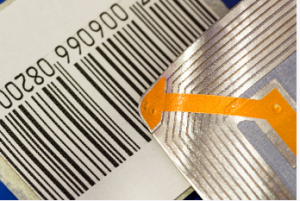If you have an Active RFID Tracker, you may want to know some tips for using it effectively. Before buying an Active RFID tracker, you should determine what you will use it for. It will help you decide whether you need one. It will also help you decide what type of reader to purchase.
Active RFID tracking
Active RFID tracking is a technology that helps companies track their assets in a faster and more reliable way. It is especially helpful when monitoring items that are valuable or moving. It can also help reduce the inventory workforce and improve asset security.
RFID tracking uses a device, such as a tag, to send out radio frequency signals. These are picked up by a network of readers and are then passed on to a central database for tracking. There are two main types of tags, active and passive.
Passive tags are a good choice for tracking low-value or small objects. They are easy to install and cheap to buy. However, their read range is generally shorter.
On the other hand, active tags have longer read ranges and additional features, such as temperature monitoring. In addition, they have an onboard battery that allows them to transmit their signals, even without an RFID interrogator.
The best way to determine which type of asset tracking is right for you is to figure out how many assets you need to monitor and how long you need to do it. For example, a passive tag can be used for short-term monitoring, while active systems may be better suited to longer-term or more complex tracking applications.
RFID tags and readers
RFID tags and readers monitor objects, track goods in transit, and locate people. They are also used to identify multiple products inside a sealed carton. Many industries are now using this technology. It provides real-time tracking and allows for more comprehensive supply chain control and transparency.
An RFID reader sends an RF signal to energize an RFID tag. An antenna then receives the resulting electromagnetic field. The reflected signal is then decoded depending on the RFID tag’s frequency. Typically, the reader can read one label at a time, but it can also read several tags simultaneously.
There are three types of passive RFID tags. Low-frequency, high-frequency, and ultra-high-frequency. Each has a different cost and range.
Low-frequency tags are cheaper. However, they have a shorter range than their higher-frequency counterparts. Passive RFID tags are used in medical facilities, supply chains, and gate controls.
Active RFID tags are more expensive. This type of tag uses a battery to broadcast a signal. However, active RFID tags are more robust, smaller, and can be riveted to an object than passive tags.
Active RFID tracker is great for live tracking and is an excellent choice for tolling vehicles. In addition to being durable, active RFID tags offer a long range and high speed.
Identifying your needs for an RFID tracker
 RFID technology is a great tool to help you track your inventory. It can also help you improve your business’s efficiency. You can track everything from your merchandise to your customers using this system.
RFID technology is a great tool to help you track your inventory. It can also help you improve your business’s efficiency. You can track everything from your merchandise to your customers using this system.
For example, it can reduce shoplifting by allowing you to track your products. You can also use it to analyze the peak times you sell your items.
It can also help you improve customer service by providing more accurate information about your products. For example, if a customer orders a shirt that doesn’t fit, you can send a replacement. Plus, it can save you time and money.
Depending on your business, you can find several RFID systems to choose from. The key is to identify your needs before you start researching the options.
There are two main types of RFID readers. Active and passive tags. Passive RFID is more affordable but doesn’t have the read range of active tags.
RFID has been around for decades. However, it’s only in recent years becoming more widespread. It is partly due to the cost-effectiveness of its technology.
A good RFID solution can improve the accuracy of your inventory and lower your labour costs. These features can allow you to remain competitive in today’s retail market.